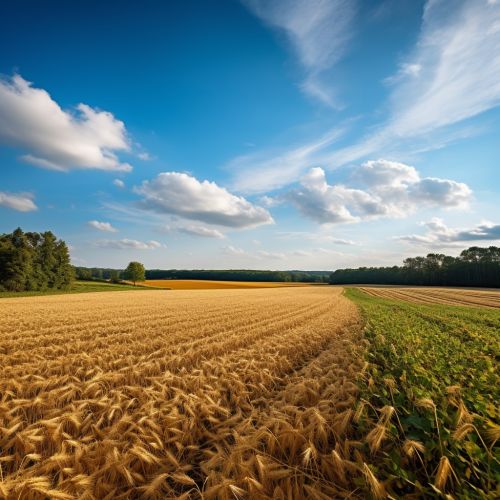Food Industry
Overview
The food industry is a complex, global collective of diverse businesses that supply much of the food energy consumed by the world's population. The industry includes a multitude of sectors such as agriculture, manufacturing, food processing, marketing, wholesale and distribution, and food service.
History
The food industry has a long and varied history, with its roots in the domestication of plants and animals and the emergence of agriculturally based societies. The Neolithic Revolution, which occurred around 10,000 B.C., marked a significant turning point in human history as societies began to transition from a lifestyle of hunting and gathering to one of agriculture and settlement.


Agriculture
Agriculture is the foundation of the food industry. It involves the cultivation of plants and rearing of animals for food, fiber, medicinal plants, and other products used to sustain and enhance human life. Modern agriculture includes a range of practices, including organic farming, industrial agriculture, and genetically modified organisms (GMOs).
Food Processing
Food processing is a procedure that takes raw ingredients and transforms them into food or converts food into other forms. It can involve physical processes like grinding or mashing, chemical processes like fermentation or pickling, and biological processes like pasteurization or enzymatic processes.
Food Manufacturing
Food manufacturing involves the mass production of food products from raw ingredients. These products are then distributed to retailers or food service providers. This sector includes companies that produce food items like bread, meat, and dairy products, as well as processed foods like snacks, beverages, and ready-to-eat meals.
Marketing and Distribution
The marketing and distribution sector of the food industry involves the selling of food products to consumers. This includes activities like advertising, market research, and logistics. Distribution involves the delivery of food products from manufacturers to retailers, and from retailers to consumers.
Food Service
The food service sector includes establishments that prepare meals, snacks, and beverages to customer order for immediate consumption. This includes restaurants, catering businesses, food trucks, and institutional cafeteria.
Challenges and Issues
The food industry faces numerous challenges and issues, including food safety, food security, and sustainability. Food safety is a scientific discipline describing the handling, preparation, and storage of food to prevent foodborne illness. Food security refers to the availability of food and one's access to it, while sustainability in the food industry involves the efficient use of resources and the minimization of waste.
Future Trends
Future trends in the food industry are influenced by a variety of factors, including technological advancements, changing consumer preferences, and global environmental challenges. These trends include the rise of plant-based diets, the growth of online food delivery services, and the increasing importance of sustainable practices.
